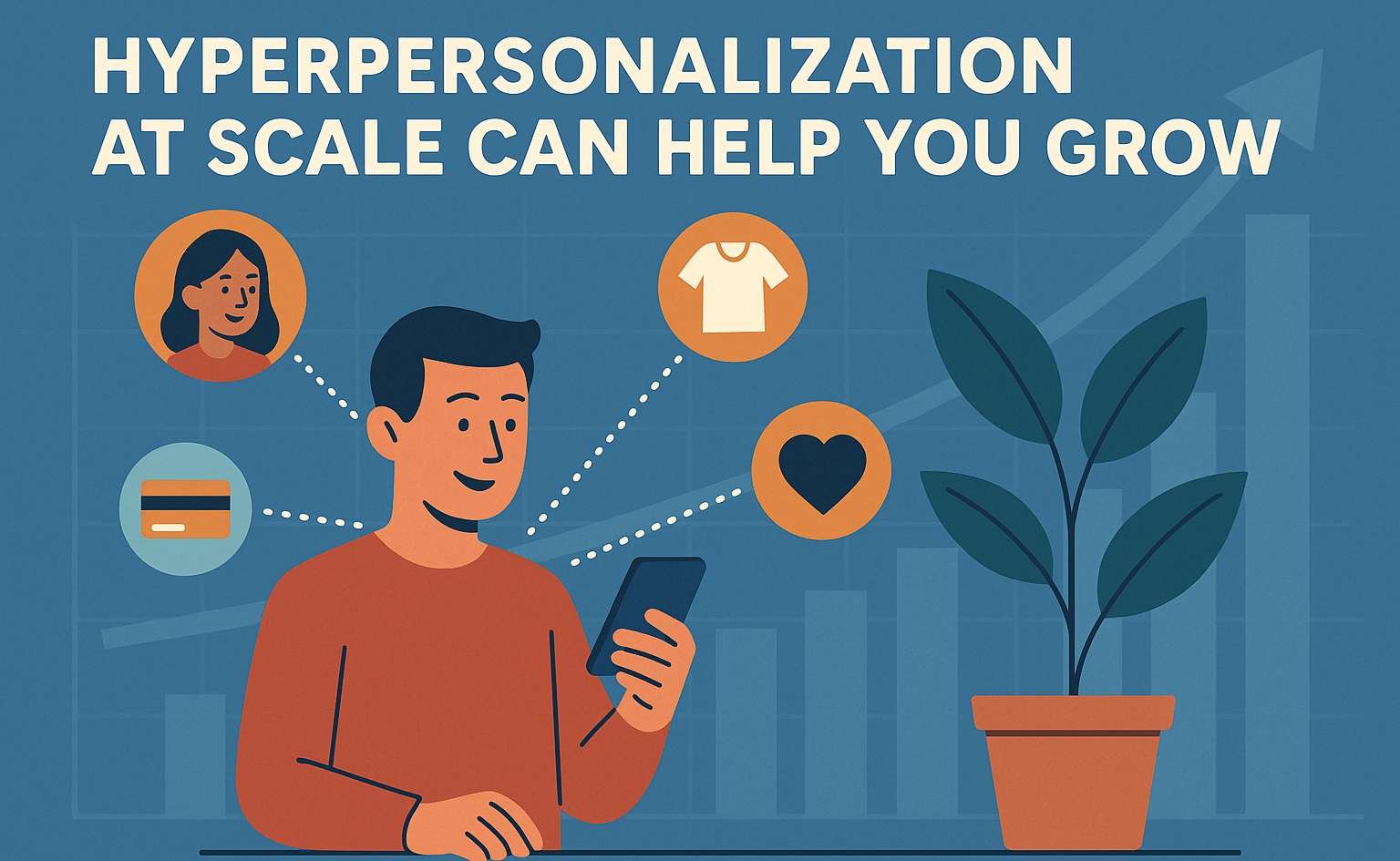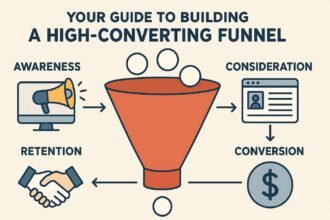There is no longer a time when one type of marketing worked for everyone. Customers today are overwhelmed by ads, emails, and “personalized” messages that all look the same. They have made strong filters to ignore anything that doesn’t seem important or timely.
And this is the problem: how do you give thousands or even millions of customers a personal, one-on-one experience at the same time?
Hyper-personalization at scale is what sets true market leaders apart from the rest.
What Hyper-Personalization Really Means
A lot of marketers mix up personalization and hyper-personalization. It’s not just a matter of words.
Personalization
Based on fixed information (like where you live, how old you are, or what you bought in the past)
Hyper-Personalization
Based on real-time behavioral, contextual, and predictive data. For example, suggesting a waterproof hiking jacket because you looked at boots, read about mountain trails, and snow is expected next week. It feels like a friendly store clerk who knows your name or a stylist who knows your taste, budget, and upcoming events—sometimes before you do.
To put it simply, personalization is useful, but hyper-personalization is almost magical.
Why It’s Worth It to Invest in Hyper-Personalization
Yes, this strategy needs money to be made. But the good side isn’t just small; it’s life-changing.
Benefits:
- Engagement and conversions that blow up
Customers don’t just notice when offers are perfectly timed and relevant; they act. There is less friction, and clicks, sign-ups, and purchases go through the roof. - More loyal customers
People stay loyal to brands that understand them. An experience that is always relevant builds emotional ties, which increases lifetime value (LTV). - Edge over the competition
While other people are sending out generic ads, you’re talking to each customer directly. This one-on-one connection is the best in crowded markets. - More profit, less waste
Precision targeting cuts down on wasteful ad spending. AI does the work of manually segmenting, which lets your team focus on creative strategy.
Creating a Hyper-Personalization Engine
You can think of this as a system with three parts:
A. The Base: Data That Is Unified and Easy to Use
Your engine needs data to work. Without it, even the best AI can’t do anything.
Gather information from all touchpoints:
- Behavioral: clicks, browsing, leaving the cart
- Transactional: order value, frequency, and history of purchases
- Demographics: age, gender, and where you live
- Situational: time of day, device, weather, and place
Make it one with a CDP (Customer Data Platform).
A CDP brings together data from different sources to create a single, up-to-date profile for each customer. This 360° view is not up for discussion.
B. The Engine: AI and Machine Learning
People can’t handle millions of signals at once. That’s where AI comes in.
- Predictive Analytics: Figure out the risk of churn, the next best product, or the intent to buy.
- Smart Micro-Segmentation: Don’t just look at “new vs. loyal customers.” Instead, look at groups that change based on what people want.
- Recommendation Engines: Like Netflix’s “Because you watched…” or Amazon’s “Customers also bought…” but made just for your brand.
C. The Execution: Dynamic Content and Journey Orchestration
Now, it’s time to use insights at every touchpoint.
- Content That Changes:
- Websites that change banners based on what you look at
- Emails that automatically fill in with articles or products that are relevant
- Journey Orchestration:
If someone leaves their cart without buying anything, they might get an email an hour later, a push notification the next day, and a personalized discount if they still haven’t bought anything.
It doesn’t feel like I’m forcing myself to do anything.
Things to Stay Away From
- The “Creepy” Line:
Hyper-personalization should feel natural, not forced. Be honest about how you use data and always add value. - Ignoring Privacy Rules:
Following the GDPR, CCPA, and other rules is not up for discussion. Data governance is something you have to do by law and to build trust. - Too Much Dependence on Tools:
A shiny CDP won’t help a bad strategy. Set goals and figure out what your customers need before you pick technology. - Not Remembering the Human Touch:
AI is strong, but people are the ones who come up with new ideas and make brands real. Your team needs to show the machine how to act like a person.
The Mindset of Hyper-Personalization
In the end, it’s all about serving instead of selling.
Hyper-personalization isn’t just a strategy; it’s a way of thinking. It changes the question from “What can we sell them?” to “How can we help them more?”
It’s not a project with a deadline; it’s an ongoing change in how you interact with customers. The brands that do well will:
- Get rid of data silos and make profiles that are all the same.
- Use AI to act on information in real time.
- Plan customer journeys that feel smooth and natural.
- Put the human touch at the center.
What do you get? A company that can handle problems, puts the customer first, and is set up for long-term growth.
In a world where digital interactions can feel cold and transactional, the brands that really know their customers will always win.












